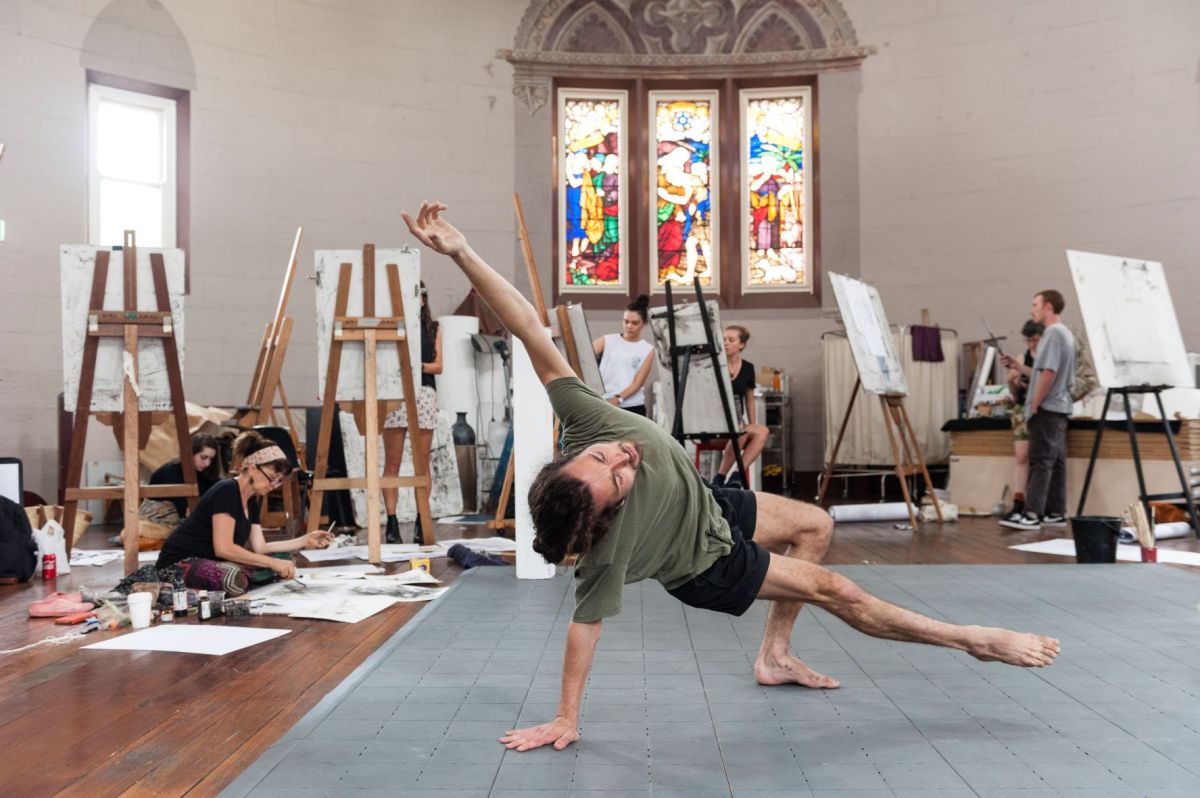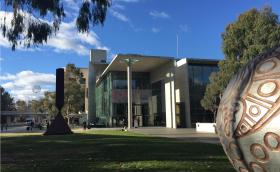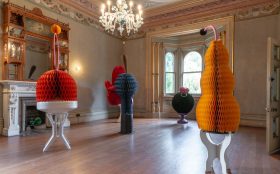This time of year, art schools across Australia are unveiling their graduate shows.
For the National Art School (NAS) in Sydney, this year’s calendar of exhibitions comes at a moment when the organisation celebrates the 100-year anniversary of moving to its historic Darlinghurst Gaol site in 1922 (the school’s origins go back to 1843).
The school now looks to the next 100 years with a stronger foundation than ever before – a secured long-term lease and heritage listing on the historic campus, State Significant Organisation status with long-term funding and $20 million renovation works completed. Collectively, these place NAS in a unique position in Australia at this time, as a fully independent art school expanding its courses and teaching faculty, while also presenting a full annual program of public exhibitions and community events.
It means this studio-based teaching institution is set to deliver emerging generations of creatives with a future-forward vision, offered across core degrees and short courses covering the disciplines of ceramics, painting, photomedia, printmaking, sculpture and drawing, as well as a central focus on art history and theory.
ArtsHub catches up with Maryanne Coutts, Head of Drawing at NAS, who says the best way to think of that legacy is to ‘frame it in opposition to what went before: the gaol’.
‘Where the gaol was about limiting freedom and imposing a social, political and imperial hierarchy, the school is about opening up to new ways of thinking, imagining and exploration that provides a voice for everyone,’ continues Coutts.
‘The security of, and improvements to the site, really give us space to have the confidence to build our education program, particularly in the postgraduate area, which is growing all the time.’
NAS Director and CEO Steven Alderton adds, ‘2022 has been a landmark year after a century of teaching art on this campus, and 200 years since building began on the former Darlinghurst Gaol in 1822. Our Grad Shows are a wonderful and fitting way to end this year-long celebration, applauding the work of these incredible emerging artists. We look forward to seeing what they achieve in the contemporary art world, and will continue to celebrate and support them in their careers.’
Coutts says while the school has a powerful legacy of nurturing skills and traditions associated with visual art, ‘it has also always been a place of enquiry about and engagement with the world’.
She adds, ‘In the 21st century now, that means we have strong roots that ground us, so we can embrace the amazing diversity of culture, technology and thinking surrounding us.’
As 39 postgraduate students and 150 BFA students show their final works this month (the largest cohort to ever graduate from NAS), Coutts points out their determination in challenging times is testament to the sense of community the school offers.
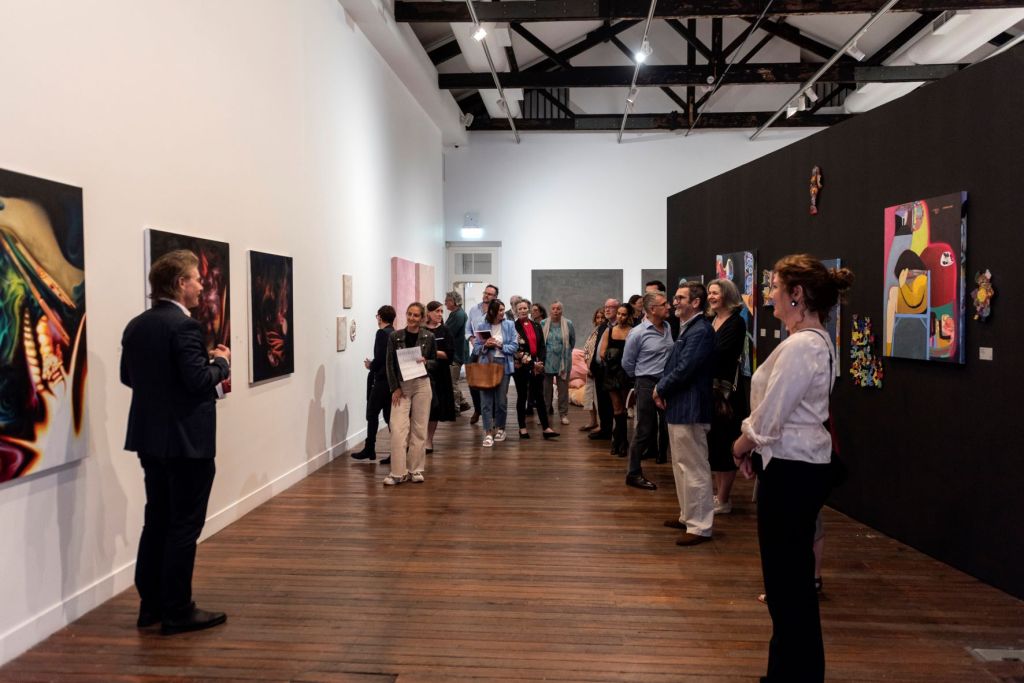
‘This year’s graduates are inspiring in their determination to respond to both the immense challenges and extraordinary developments they live with,’ says Coutts. ‘Coming out of the COVID years seems to have brought a strength of community, as well as a deepening of sensitivity in the art making.
‘In particular, I have noticed a growing commitment to making art about the dangers to the environment caused by global warming – whether it is Sadhbha Cockburn’s gentle meditation of the deep grief she feels or Wendy Miller’s exploration of the loss of the great kelp forests off the coast of Tasmania.’
The central role of drawing
A key part of the 2023 NAS program is the return of the Dobell Drawing Prize, and the Festival of Drawing and Drawing Symposium, for its third edition. Coutts tells ArtsHub: ‘I think of drawing broadly as a way to both ground ourselves physically in an activity that is about being present to the world, at the same time as being a way to think about, experiment with and question it.’
NAS shakes up what drawing is, and can be today.
‘I am really excited about new things we are bringing into our courses. This includes special programs that give students opportunities to work with drawing in relation to textiles, popular culture, drawing machines and performance, our sound club where students and staff experiment with sound art, as well as opening up new ways to work with more traditional means such as working in the landscape,’ explains Coutts.
The Festival of Drawing will be a full program of activities that range from exhibitions, to classes to talks, and is open to the public as well as students.
‘This year for the Drawing Symposium, we are focusing on the importance of those conversations artists have with other artists that last over years, and across distances. We are inviting four artists to each invite another artist who they often talk with about their practices – one of the panels will be Hiraku Suzuki in Japan talking with Gary Warner in Sydney,’ Coutts says.
Nurturing diverse voices
While NAS has garnered a reputation for celebrating diverse studio practice, it is also a champion of diverse contemporary voices. 2023 kicks off with NAS’s Queer Contemporary Program, which is part of WorldPride Sydney; while the school has recently appointed a new Head of First Peoples Programs, John Waight, in a leadership role for First Peoples advocacy and engagement at NAS; and the Summer School program of short courses is by very definition diverse in its many offerings.
Coutts says: ‘I believe the whole point to teaching art is in supporting each student to find their personal voice. This means that we need to focus as much on nurturing individual cultural and personal experiences, as on an openness to diversity of visual language.’
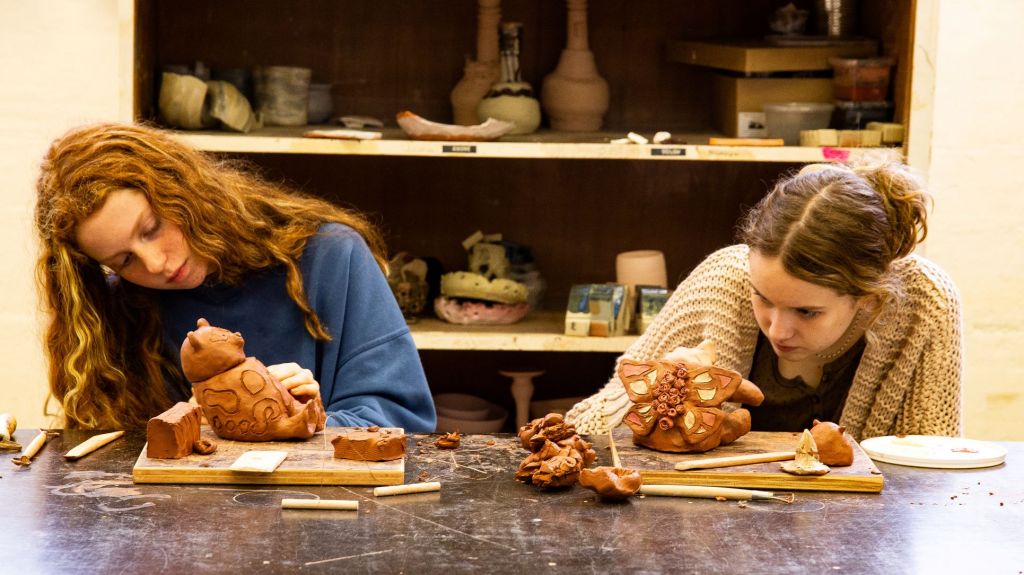
The 2023 NAS Summer School programs are now open for enrolments, with two independent weeks of five-day intensives, running from 9-13 January and 16-20 January, New courses on offer include Drawing with Threads and Textiles taught by talented NAS Masters graduate Armando Chant, who has a background in fashion. Other new courses include Drawing from the Imagination with Andrew Antoniou; Advanced Painting with Monika Behrens; Oil Painting from the Masters at the State Library of NSW with Michelle Hiscock; and Clay Slab, Sensation and Surface with Julie Bartholomew.
And recognising that creativity starts at any age, NAS’s school holiday program caters for students from Kindergarten to Year 12, the after-school Art Club 2023 for teenagers aged 15-17 to expand their technical artistic skills, and the annual HSC Intensive Studio Practice for Year 11 students to give them an edge on the year ahead and a taste of art school.
Find out more about 2023 courses here. The NAS Postgrad Show runs until 20 November, and the BFA Grad show from 9-18 December, 2022.

